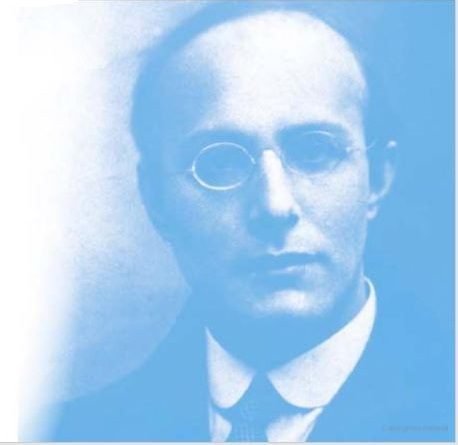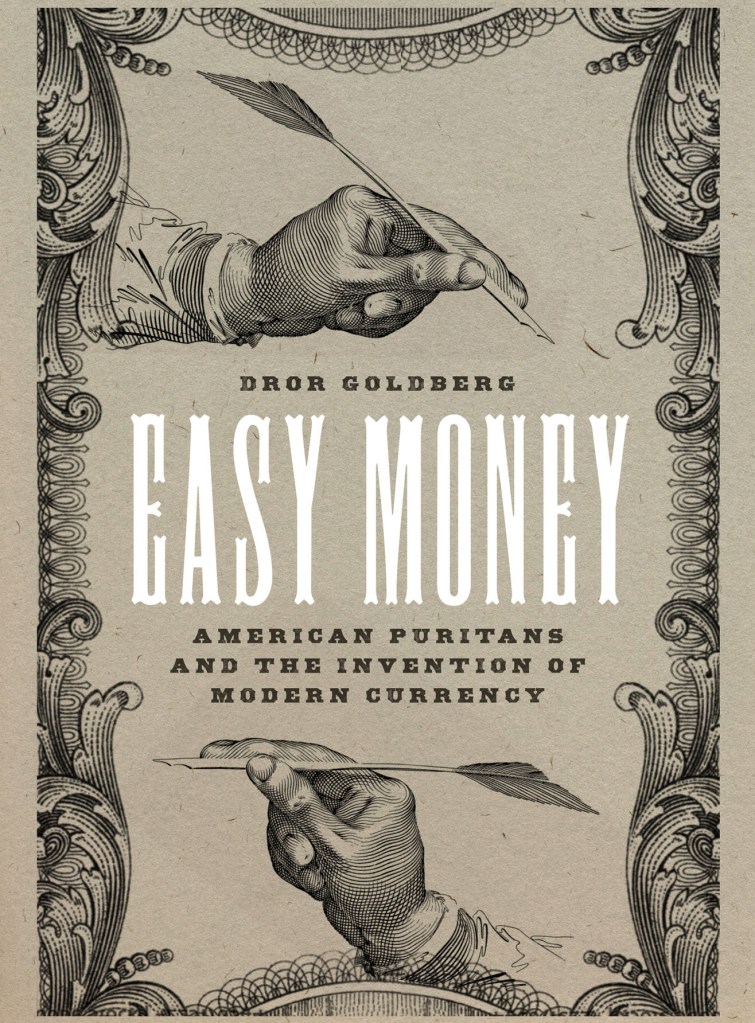by Dror Goldberg*
Where and when did modern currency originate? My book Easy Money: American Puritans and the Invention of Modern Currency (University of Chicago Press, 2023) tackles this fascinating question. I discover and explain the origin of modern currency in 1690 in the English colony of Massachusetts Bay — an unimportant place, compared to London which had just started its Financial Revolution or Amsterdam, the financial capital of Western Europe.
Modern currency is paper money and token coins that are legal tender for debts and taxes but have no relation whatsoever to gold. This has been the physical and legal character of our currency since 1971, when the US suspended the right of foreign central banks to convert their dollars into gold. Although legal tender currency is declining in importance in shopping in favor of electronic payments, it is still the legal foundation of the financial system, most of which consists of promises to pay “dollars,” “euros,” etc. For courts this means legal tender currency.
This type of currency, I argue, was invented in 1690 Massachusetts. Paper money per se is of course older than that – in China and in isolated episodes in Western civilization. However, all these paper moneys legally relied on intrinsically valuable goods: The issuer’s promise to provide definite amounts of goods to the bearer (e.g., a gold coin) or an obligation to receive the paper in transactions which was imposed on all private sellers under penalty.
In 1690, Massachusetts devised an alternative that legally relied only on the paper’s circulation into and out of the state’s treasury. This money was, in modern terms, legal tender for taxes. Why did this happen in 1690s Massachusetts, a place infamous for stern Puritanism and the Salem witch trials? The explanation is a combination of the economic circumstances of early colonialism, the turbulent 17th century in England, and especially the unusual population that settled in Massachusetts.
All non-Spanish colonies had chronic coin shortages. The colonists were desperate for European goods, and so when European ships came for the raw materials the colonies produced the colonists exchanged all their produce – and most of their coins – for European products. Very few coins remained for domestic circulation. In every colony the main produce emerged as an alternative money: Tobacco in Virginia, maize in Plymouth, sugar in Barbados, beaver furs in Canada.
Massachusetts began in 1630 in the same way, adopting grains and furs as currencies, but it quickly moved beyond that. Why? Because these Puritans were different immigrants. They did not consist only of poor people seeking economic opportunity. Most of them belonged to the middle class and had everything in life except for religious freedom. These religious refugees included merchants who turned Boston into North America’s trade hub. The many ministers founded Harvard College with a library and a printing press – the first of their kinds in English America. The political elite was experienced in law and finance. These Puritans both needed better forms of payment for their non-slave, commercialized economy and they had the ability to devise alternatives.
Within a dozen years Massachusetts was the first to adopt bullets, Indian seashell money, bullion, and foreign coins as official currencies. Soon private bills circulated. The abolition of monarchy in England annulled the royal minting prerogative, leading Massachusetts to be the only colony to open a mint (in 1652).
When royalty returned it informed Massachusetts that operating the mint, and making its coins legal tender, was treasonous. In 1682 the mint closed. There were attempts in 1680s Boston with banks issuing paper money backed by land titles. These projects failed because England vacated Massachusetts’ charter and imposed a dictatorship – the Dominion of New England – which voided all land titles.
The Glorious Revolution in England (1688-89) inspired a revolution in Boston, which restored the old government de facto. The Glorious Revolution also brought Anglo-French warfare to America. Massachusetts lobbied England to restore its charter while launching attacks on Canada. In the fall of 1690, Massachusetts failed to occupy Quebec and the many returning soldiers demanded pay.
The government increased taxes enormously, but it would have taken a long time to collect them in winter after so many working men had been absent. The government knew that Canada itself was issuing paper money (manually, from playing cards!), but it had a constitutional problem in imitating Canada: England, considering restoration of the colony’s charter, might not have been happy seeing Massachusetts once again violating the royal monopoly on money creation. Massachusetts could not impose a new money on debtors as legal tender, as it had done with local coins, let alone forcing all sellers to accept it under penalty, as in Canada.
The merchants and intellectuals leading the colony had learned from their numerous experiments that an object is more likely to be money if the government itself accepted it in tax payments. Each soldier held a “debenture” stating the colony’s debt to him, so the legislature made the debentures legal tender for taxes. That wasn’t enough because debentures were for large, non-round sums. Each soldier was then offered to sell his single debenture back to the government in exchange for several “bills” of small, round denominations, convenient for shopping, with the same total face value. Today we call this an open market purchase. No private party was forced to accept the bills, but they were informed that they could discharge their tax obligations with these bills. Officially, it was not money at all, and so, as planned, England did not care. The bills did function as money – with neither gold nor coercion. Our modern currency relies on the same mechanism.
That law of December 1690 that gave birth to a revolutionary paper money also created the world’s first-ever monetary committee – a forerunner of the Federal Open Market Committee. How did that happen? Formally, Massachusetts was a commercial company. Lacking state bureaucracy, its legislature regularly assigned any work of importance to committees. These normally included members of the Council, the house of representatives, and private experts. It was thus natural for the bills to be issued by a committee of five men – the Treasurer, another Councilor, the Speaker of the house, and two former bankers. The committee’s discretion regarding the quantity, denominations, and timing of the issue of the bills could affect inflation.
In having a slight majority for representatives of the executive and legislature over representatives of the private sector (3:2), that committee was remarkably like the current FOMC (7:5 ratio). It is not a coincidence: The American system of checks and balances, which prominently includes the private sector, has been in place long before American Independence.
The Puritan society that formed in New England was very unusual in the context of immigration. It thus not only created much of the political and cultural foundations of the United States; it also created the origins of our currency and the body that controls it.
My book is the first one devoted to understanding a revolutionary type of money which became – centuries later – modern money. By looking at the colonists’ pressing needs for a new type of money as well as the colonists’ abilities to solve their problem, I suggest a balanced approach to the analysis of social inventions.
————-
* Dror Goldberg is a senior faculty member at the Department of Management and Economics at the Open University of Israel.
***
Feel free to share this post with your colleagues, students and friends.
Follow Economic Sociology & Political Economy community on
Facebook / Twitter / LinkedIn / Whatsapp / Instagram / Tumblr / Telegram / Threads

